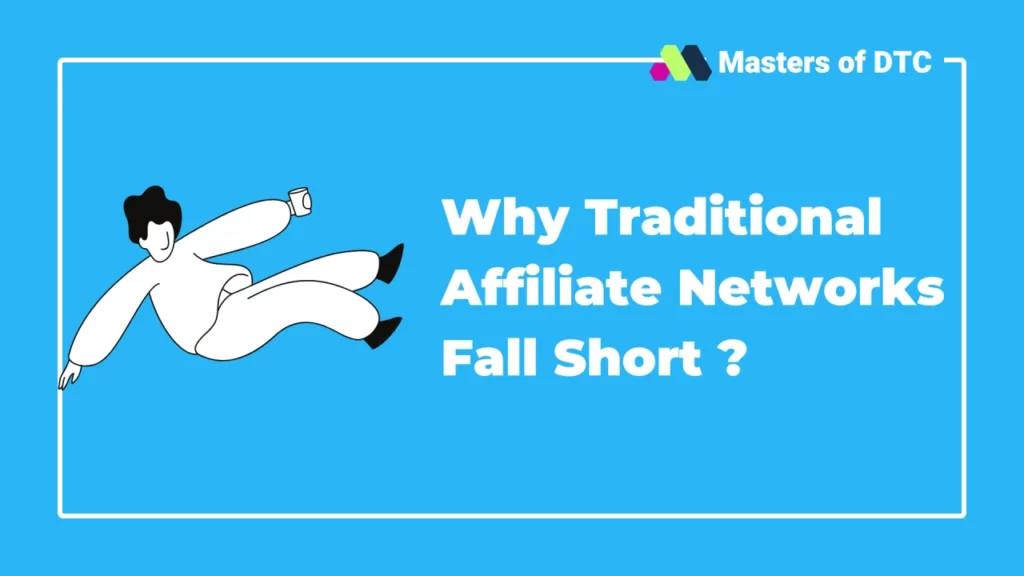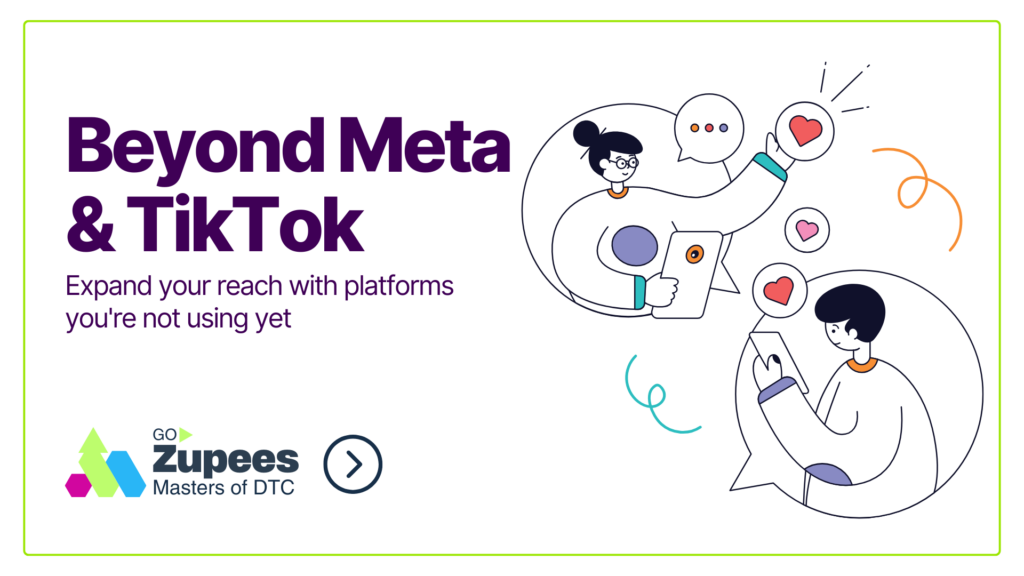I started affiliate marketing way back in 1999 when Amazon started its very first affiliate program.
My first affiliate website was bestfictionbooks.com not even sure if the domain works anymore. Being an avid reader of popular fiction, I thought writing about it would make me a lot of money.
While I did earn a couple of thousand (in rupees at the time) it was enough to get me on a path, that I’m still walking.
I have been an affiliate, an agency, a platform, and an advertiser for over 20 years now, and have seen countless brands, campaigns, and industries win and lose.
If there was one constant during all this time, it was the promise of an affiliate network, for every product, for every service, for every type of a business out there, there was an affiliate network.
When we built Zupees, it was this promise, that drove our mission, and its myriad list of features, integrations, and capabilities.
Things aren’t the same anymore. \
Over the last 3-5 years, traditional affiliate networks aren’t satisfying the needs of the emerging brands as they should.
That’s true for all businesses in general, but especially true for DTC Brands.
Customer Journey Is Not a Straight Line
Customers aren’t following their linear journey and are zig-zagging, criss-crossing their paths to making a decision, and affiliate networks come up short in not only being able to track, but also in their ability to integrate multiple touchpoints on the same platform.
Of course, there are some exceptions impact.com being one of those, that has navigated their roadmap very successfully, the traditional affiliate networks are falling short.
Even more so, as it relates to eCommerce – DTC Brands of tomorrow.
The Promise of Traditional Affiliate Networks
For years, traditional affiliate networks have promised DTC brands an easy and scalable way to grow sales through partnerships.
By leveraging an expansive network of affiliates, brands could theoretically reach new audiences, drive conversions, and only pay for performance.
The allure was simple: access to ready-made infrastructure, tracking tools, and payment processing without requiring substantial upfront investment.
The Changing Landscape of Digital Marketing
However, the digital marketing ecosystem has evolved dramatically.
Consumers are more discerning, platforms demand authenticity, and the competition for attention is fiercer than ever.
Affiliate marketing is no longer just about conversions—it’s about building trust, creating valuable partnerships, and crafting a cohesive customer journey across multiple touchpoints.
At the same time, new technology and data capabilities have shifted the playing field.
Brands now have access to advanced tracking, deeper analytics, and insights into every stage of the customer lifecycle.
These changes have raised the bar for what affiliate programs can and should deliver.
Why This Matters for DTC Brands in 2025, And Beyond
For DTC brands navigating 2024 as well as planning for 2025, the traditional affiliate network model often feels out of step with the demands of modern growth.
What once seemed like a turnkey solution now reveals its limitations: generic partnerships, lack of strategic depth, and an over-reliance on volume rather than quality.
The result?
Missed opportunities, wasted resources, and a failure to tap into the full potential of partnership marketing.
To thrive in this new environment, brands must go beyond the traditional affiliate playbook and embrace innovative, strategic approaches that align with their growth goals and brand values.
The Traditional Affiliate Network Model
Core Components
Traditional affiliate networks operate on a straightforward model, offering brands a suite of tools and resources to manage partnerships.
These include:
- Network-Provided Tracking Affiliate networks provide tracking links and cookies to attribute conversions to specific partners. This system is designed to simplify attribution, but it heavily relies on last-click metrics, which can ignore the broader context of a customer’s journey.
- Commission-Based Payments Brands set commission rates, incentivizing affiliates to promote products. Payments are automated, reducing administrative overhead, but the model often prioritizes volume over value.
- Self-Serve Partner Recruitment Brands gain access to a marketplace of potential partners, primarily blogs or review sites. However, the mass marketplace approach means affiliates are often generic, with little focus on alignment with a brand’s niche or goals.
- Basic Reporting Tools Most networks offer analytics dashboards for tracking sales, clicks, and commissions. These tools, while useful, are often limited in scope, failing to provide insights across multiple channels or touchpoints.
Initial Appeal
Traditional networks gained popularity because they lowered barriers to entry and offered a degree of simplicity:
- Low Barrier to Entry: Small brands could quickly launch affiliate programs without technical expertise.
- Built-in Partner Marketplace: Networks like CJ.com and ShareASale provided a pool of ready-to-go affiliates, often bloggers or niche review sites.
- Automated Payments: Streamlined payouts ensured affiliates were paid promptly.
- Basic Tracking Infrastructure: The ability to monitor conversions with minimal setup appealed to brands looking for quick wins.
However, the rise of platforms like Impact.com has introduced multi-channel partnerships to this ecosystem, allowing brands to recruit affiliates from YouTube, TikTok, and Instagram.
These platforms bring video-driven, influencer-led strategies into the fold, offering greater flexibility and reach.
While this innovation broadens possibilities, it also exposes the limitations of traditional networks:
They often lack the strategic guidance to fully integrate these diverse partnerships into a cohesive marketing strategy.
Where Traditional Networks Fall Short
Partner Quality & Relevance
One of the most significant drawbacks of traditional affiliate networks is their reliance on a mass marketplace approach. While offering access to thousands of potential affiliates sounds advantageous, it often leads to challenges such as:
- Limited Vetting Processes: Affiliates are rarely scrutinized for quality, alignment with brand values, or audience relevance. As a result, many partnerships fail to deliver meaningful ROI.
- High Volume of Inactive Partners: A significant percentage of affiliates sign up but never actively promote the brand. This leads to a bloated network with minimal value.
- Quality vs. Quantity Challenges: Brands often find themselves managing a large pool of low-impact affiliates, diverting resources from cultivating high-performing partnerships.
Example: A DTC skincare brand might be inundated with applications from coupon sites and low-traffic blogs, missing out on creators with engaged YouTube audiences or TikTok influencers who could authentically promote the product.
Strategic Limitations
Traditional networks operate with a one-size-fits-all mentality, focusing on transactional relationships rather than strategic partnerships. This creates barriers to innovation:
- Limited Partnership Types: Networks are primarily designed for blog affiliates and deal sites, offering little flexibility for collaborations with influencers, content creators, or media outlets.
- Lack of Strategic Guidance: Networks rarely provide actionable insights or recommendations for improving performance, leaving brands to navigate challenges independently.
- Missed Opportunities for Deeper Collaborations: High-value partnerships—such as exclusive content deals or multi-channel campaigns—are difficult to execute within traditional systems.
Example: Networks might not support multi-channel partnerships like recruiting a TikTok creator to drive traffic, a YouTube reviewer to showcase the product, and an Instagram influencer to build brand awareness in tandem.
Performance Measurement
Measuring affiliate performance is another area where traditional networks fall short.
Their tools often prioritize simplicity over depth, resulting in:
- Last-Click Attribution Bias: Affiliates are rewarded for the final click, ignoring the impact of other partners or channels earlier in the customer journey.
- Limited Cross-Channel Insights: Data is siloed within the affiliate network, preventing brands from connecting affiliate efforts to broader marketing campaigns.
- Basic Reporting Capabilities: Reports focus on clicks and conversions but lack actionable insights into partner behavior, audience demographics, or content performance.
- Incomplete Customer Journey Tracking: Traditional networks struggle to provide visibility into how affiliates influence customer decisions across multiple touchpoints.
Growth Constraints
The reliance on passive partner acquisition and a marketplace-centric model often limits long-term growth. Key challenges include:
- Passive Partner Acquisition: Brands depend on affiliates discovering them rather than proactively identifying the best-fit partners.
- Limited Relationship Development: Networks focus on transactional partnerships rather than fostering deeper connections that drive sustained results.
- Network Dependency: Brands tied to a specific network often struggle to expand beyond its ecosystem.
- Restricted Partnership Models: Innovative models like brand-to-brand collaborations or exclusive content partnerships are challenging to implement.
Resource Requirements
While traditional networks promise simplicity, managing an effective program often requires more resources than anticipated:
- Hidden Management Needs: Brands must actively recruit, vet, and engage affiliates to see meaningful results.
- Manual Optimization Work: Without robust automation tools, brands must manually analyze data and optimize campaigns.
- Limited Automation Capabilities: Many processes, such as segmenting high-performing partners or tracking advanced metrics, require significant manual effort.
- Internal Resource Drain: Teams often spend more time on operational tasks than strategic growth.
The Evolution: PLSM Approach
The Partnership Led Sales & Marketing (PLSM) framework redefines affiliate marketing by shifting from a transactional, network-driven model to a strategic, ecosystem-based approach.
It prioritizes quality over quantity, advanced tracking, and proactive relationship development, aligning with the needs of modern DTC brands.
Strategic Partner Selection
PLSM focuses on identifying and cultivating high-value partnerships that align with a brand’s mission and audience.
- Targeted Partner Identification: Instead of relying on a marketplace, brands actively seek out partners with engaged audiences and relevant platforms, such as niche YouTube creators or TikTok influencers with authentic storytelling.
- Quality-Focused Vetting: Potential partners are assessed for audience relevance, content quality, and alignment with the brand’s values, ensuring partnerships drive meaningful results.
- Alignment with Brand Values: Partners are selected based on their ability to authentically represent the brand, fostering trust and credibility with their audience.
- Custom Partnership Design: Collaborations are tailored to leverage the partner’s unique strengths, whether through exclusive content, multi-platform campaigns, or co-branded initiatives.
Example: A luxury bedding brand might partner with a YouTube interior designer, a TikTok lifestyle influencer, and an Instagram photographer, creating a cohesive campaign that spans multiple channels while maintaining a unified message.
Comprehensive Partnership Types
Unlike traditional affiliate networks, PLSM incorporates a wide array of partnership types to maximize impact:
- Beyond Traditional Affiliates: PLSM includes influencers, content creators, publishers, and even brand-to-brand collaborations.
- Content Partnerships: Partners produce high-value content like tutorials, reviews, or unboxing videos to showcase products in action.
- Strategic Collaborations: Brands engage in deeper collaborations, such as exclusive product launches or co-branded events.
- Brand-to-Brand Opportunities: Cross-promotions with complementary brands expand reach and share audience trust.
Example: A DTC skincare brand might work with a health supplement company to create a joint educational campaign on holistic wellness, sharing the cost and audience benefits.
Advanced Performance Tracking
PLSM leverages cutting-edge tools and methodologies to provide a comprehensive view of performance across channels and partners:
- Multi-Touch Attribution: Tracks customer interactions across all touchpoints, giving credit to each partner’s role in the conversion journey.
- Cross-Channel Insights: Integrates affiliate data with other marketing channels like paid media and email, offering a holistic understanding of customer behavior.
- Partner-Specific Analytics: Tracks each partner’s contribution to revenue, ROI, and customer acquisition metrics, enabling data-driven optimizations.
- ROI Optimization Tools: Uses predictive analytics and machine learning to allocate resources to the highest-performing partnerships.
Active Growth Management
PLSM replaces passive recruitment with proactive strategies to build and scale partnerships:
- Proactive Partner Recruitment: Actively seeks and nurtures partners who align with the brand’s growth objectives.
- Relationship Development: Builds deeper, long-term connections through regular communication, feedback, and collaboration opportunities.
- Strategic Scaling: Gradually expands partnerships while maintaining quality and alignment, avoiding the pitfalls of a “quantity-first” approach.
- Ecosystem Building: Creates a network of partners that complement each other, enhancing overall program effectiveness.
Resource Optimization
PLSM balances strategic execution with operational efficiency, minimizing resource drain:
- Managed Service Approach: Combines in-house expertise with external support to handle partner recruitment, analytics, and optimization.
- Automation of Key Processes: Streamlines repetitive tasks like payouts, performance tracking, and communication.
- Expert Guidance: Leverages experienced professionals to provide strategic oversight and ensure program success.
- Systematic Scaling: Develops frameworks and playbooks for consistent and scalable partnership management.
The Business Impact
The shift from traditional affiliate networks to the PLSM framework represents a fundamental evolution in partnership marketing.
This transition addresses core challenges and delivers measurable benefits in three key areas: cost structure, growth potential, and resource requirements.
Cost Structure
- Traditional Networks: Hidden Costs of Management While traditional affiliate networks appear cost-effective on the surface, hidden costs often emerge. Brands must invest significant time and resources into managing inactive affiliates, optimizing performance, and manually overseeing relationships. These inefficiencies lead to diminished ROI over time.
- PLSM: Transparent, Performance-Based Model PLSM focuses on value-driven partnerships, ensuring resources are directed toward high-impact affiliates. By leveraging advanced analytics and automation, brands can optimize spend and achieve greater transparency in performance metrics. The result is a model that scales profitably and aligns with revenue goals.
Example: A DTC wellness brand implemented PLSM, reducing partner churn by 30% while increasing ROI by 45% through better alignment and targeted campaigns.
Growth Potential
- Traditional Networks: Linear, Limited by Network Growth within traditional affiliate networks is often constrained by the platform’s ecosystem. Brands are limited to the affiliates present in the marketplace, which may not evolve alongside their growth goals or audience needs. Additionally, passive recruitment strategies restrict innovation and expansion.
- PLSM: Exponential, Ecosystem Approach PLSM fosters exponential growth by enabling brands to cultivate a dynamic ecosystem of partners, including influencers, content creators, and strategic collaborators. This approach ensures that partnerships evolve alongside the brand, unlocking new revenue streams and market opportunities.
Example: A fashion brand used PLSM to partner with Instagram influencers and TikTok creators for a coordinated product launch, doubling their reach and achieving 3x revenue growth compared to their previous affiliate campaigns.
Resource Requirements
- Traditional Networks: Internal Team Needed Despite offering tracking tools and basic automation, traditional networks often demand significant internal resources to manage day-to-day operations, optimize campaigns, and nurture relationships. Smaller teams may find these demands unsustainable, leading to bottlenecks in execution.
- PLSM: Managed Expertise Included PLSM integrates expert guidance and streamlined processes to minimize operational strain. With a managed-service approach, brands gain access to specialists who handle recruitment, performance tracking, and partner engagement. This allows internal teams to focus on strategic priorities rather than operational tasks.
Example: A home goods brand partnered with a PLSM agency to automate performance tracking and optimize partner ROI, freeing up internal resources for new product development.
The PLSM framework delivers a clear advantage by addressing the systemic inefficiencies of traditional networks. It empowers DTC brands to achieve scalable, sustainable growth while aligning partnership marketing efforts with broader business goals.
Making the Transition
Shifting from traditional affiliate networks to the PLSM framework requires careful planning and execution.
By evaluating your current program, setting clear goals, and implementing new systems, you can unlock the full potential of partnership marketing while minimizing disruptions to existing operations.
Assessment Phase
The first step is to evaluate the strengths and weaknesses of your current affiliate program, identifying areas for improvement and establishing new partnership goals.
- Evaluate Current Affiliate Program: Analyze partner performance, commission structures, and overall ROI to identify inefficiencies. Use insights from multi-channel performance data to understand which affiliates or strategies are driving results.
- Identify Improvement Opportunities: Determine gaps in partner quality, cross-channel reach, and tracking capabilities. Focus on areas where traditional networks fall short, such as partner engagement and strategic alignment.
- Set New Partnership Goals: Define what success looks like under the PLSM framework. Goals might include higher-quality partnerships, multi-channel expansion, or increased ROI through targeted campaigns.
Example: A DTC beauty brand discovered that 83% of its affiliates were inactive. Transitioning to a PLSM approach allowed them to focus on active, high-performing partners, leading to a 500% increase in traffic and nearly doubled their conversion rates.
Implementation Steps
Transitioning to PLSM involves both operational changes and strategic realignment. While the process may vary by brand, the following steps provide a blueprint for success:
- Transition Existing Partners: Audit your current affiliates to identify high-value contributors. Engage these partners in discussions about evolving collaboration opportunities, ensuring they remain invested in your program.
- Set Up New Systems: Implement advanced tracking tools for multi-touch attribution, cross-channel insights, and real-time performance analytics. Platforms like Impact.com can serve as a foundation for integrating diverse partnership types.
- Establish New Processes: Develop workflows for partner recruitment, onboarding, and relationship management. Use templates, playbooks, and automation tools to streamline operations and maintain consistency across the program.
Example: A tech accessories brand revamped its affiliate program by integrating PLSM tools, enabling better partner segmentation and targeted campaigns. Within six months, the program’s revenue contribution grew by 70%.
Best Practices for a Smooth Transition
- Communicate Clearly: Inform existing partners about changes to the program, highlighting benefits such as enhanced support, better tools, and increased earning potential.
- Prioritize Training: Equip your team with the skills and resources needed to manage the PLSM framework effectively. Consider working with an experienced agency or consultant for strategic guidance.
- Test and Iterate: Start with a pilot program to test new processes, tracking systems, and partner types. Use insights from this phase to refine and scale the initiative.
By taking a structured, methodical approach, DTC brands can transition to PLSM without losing momentum.
This evolution paves the way for more strategic, impactful partnerships that drive sustainable growth.
The evolution of affiliate marketing from traditional networks to the PLSM framework reflects the shifting demands of the modern digital landscape.
DTC brands that cling to outdated, transactional models risk being left behind, while those embracing innovation can unlock new levels of growth and profitability.
The Evolution of Partnership Marketing
Traditional affiliate networks, with their one-size-fits-all approach, served their purpose in an earlier era of digital marketing.
They offered simplicity, basic tools, and a mass marketplace of partners.
However, as the industry has matured, so have the expectations of brands and their audiences.
Today, success requires more than tracking clicks or generating sales—it demands authentic relationships, multi-channel integration, and strategic alignment.
The PLSM framework addresses these needs, offering:
- Strategic partner selection that prioritizes quality and alignment.
- Comprehensive partnership types that go beyond traditional affiliates.
- Advanced tracking and analytics to measure impact across touchpoints.
- Proactive growth management that fosters deeper, scalable collaborations.
- Resource optimization that frees brands to focus on their core strengths.
Why Brands Need to Adapt
For DTC brands navigating 2024 and beyond, staying competitive means rethinking traditional marketing strategies.
Partnerships are no longer a simple add-on but a core component of growth.
The PLSM framework ensures brands can:
- Build meaningful connections with high-value partners.
- Expand reach through multi-channel strategies like TikTok and YouTube.
- Optimize performance with actionable insights and advanced tools.
- Scale efficiently, balancing resources with results.
Next Steps for DTC Brands
The transition to PLSM may seem daunting, but the rewards far outweigh the challenges.
By taking the first steps toward assessment, planning, and implementation, brands can unlock the full potential of partnership marketing.
Action Steps
- Audit Your Current Affiliate Program: Identify inefficiencies, inactive partners, and gaps in performance.
- Identify Partnership Opportunities: Research potential multi-channel partnerships, including influencers and media collaborations.
- Evaluate Resource Requirements: Determine whether in-house expertise, external support, or automation tools are needed for success.
- Consider PLSM Transition: Explore how a structured, strategic approach to partnerships can enhance your marketing outcomes.
Ready to transform your affiliate program into a growth engine?
Contact us today to discover how the PLSM framework can drive exponential results for your brand.




